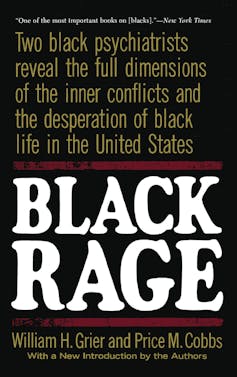Diversity Training and the Future
Picture a standard corporate meeting room, participants crowded around a video of multi-racial actors acting out hypothetical office scenarios. They fill out workbooks about racial stereotypes, sit through psychological lessons on prejudice and discuss the recent protests against police brutality on the news. The year is 1992, and although the VHS player and the shoulder pads may be dated, other elements of this scene might be familiar to readers in 2020.
Readers may have sat through diversity training at their workplaces or watched as businesses responded to protests against racism. And as we have in the past when companies were called out for racist incidents or homogeneity in the C-suite, we’re once again seeing a call for a familiar intervention to reduce racism: unconscious bias training.
Skepticism about impact
As a business historian, it doesn’t come as a surprise to see better training as a proposed solution. Yet activists and scholars in the diversity inclusion world have also expressed growing skepticism about the impacts of unconscious bias training.

What’s missing from the conversation is a historical perspective on how we got here as with diversity training has become the default response. That perspective requires an examination of several strands of 20th-century North American history, including psychology, human resource management and equal employment legislation.
Very few corporate announcements of diversity initiatives explain that these programs were needed because of companies’ histories of discriminating on the basis of race. With the mid-1960s introduction of equal employment law and affirmative action in the United States, management positions became a key battleground in attempts to desegregate white-collar work.
Advocates of equal employment in business identified the attitudes of largely white middle managers as particularly important targets for change, given their role in hiring and promotion decisions.

Diversity training was intended, back then, as an HR intervention to help people adjust to working in newly integrated offices, not to hold companies accountable for previous racially biased policies or incidents.
The history of diversity training
Some of the earliest forms of corporate training were mandated in response to employment discrimination lawsuits, as in a 1970s class-action lawsuit at Xerox.
Over the course of the 1960s to 1980s, corporate training broadened in scope to target employee personality traits. This time period also witnessed the ascendance of the Myers-Briggs Type Indicator, a personality testing system that became widely used in management training as a way to understand how personality differences affected working relationships.
This diversity training aimed to teach managers a whole host of social and emotional skills necessary to manage others, including the ability to manage and mitigate conflict stemming from racial differences. Training was a part of the burgeoning “business case for diversity,” which had diversity experts and executives alike arguing that a diverse workforce provided a competitive advantage to corporations in a globalized economy.
The career of Price Cobbs, a Black psychiatrist-turned-diversity consultant, illustrates how psychology and business collided in diversity training. In the wake of the Second World War, social psychologists turned to the study of prejudice to explain the horrors of the Holocaust, as well as U.S. segregation.
They identified setting up small groups of 10 to 15 people as an important way to study and change people’s prejudice, developing techniques of unstructured group discussion that continue to be used in diversity training today.

Inspired by social psychology, Cobbs developed the method of the “interracial encounter group” in 1960s California, and ran weekend seminars to break down stereotypes through sensory awareness exercises and fraught interracial discussions. He co-authored a landmark book detailing the effects of racism on Black psychology entitled Black Rage.
In the next few decades, Cobbs would be hired by the computer firm Digital Equipment Corporation to consult for a program they called Valuing Differences, which paired psychological training approaches with the Myers-Briggs to teach managers how to oversee diverse workplaces.
In the late 1980s, Cobbs also launched a video series called Valuing Diversity and became a popular consultant. By this point, the marketplace for diversity consulting had exploded: new consulting firms sold workbooks, video series and training seminars to corporate clients across North America. According to his autobiography, he taught white executives at Procter & Gamble the term “institutional racism.”
Despite his efforts, Cobbs, like other Black diversity trainers, found himself constrained by white institutions and employees. Diversity trainers generally lacked any bureaucratic power within the ranks of the middle managers they were training.
Trainers were also cautioned to avoid upsetting white participants by calling out white racism.
White backlash
The white backlash became a theme in the business trade media by the early 1990s, as exemplified in Business Week‘s “White, Male, and Worried” article that interviewed white men worried about diversity training.
Diversity training exercises risked reinforcing and revealing racial stereotypes, rather than breaking them down. One common technique at the onset of diversity training asked participants to list off common racial stereotypes — a technique spoofed in The Office’s “Diversity Day” episode, resulting in a torrent of racist and sexist stereotypes.
More seriously, in one 1988 lawsuit, Black employees of a California grocery store used the stereotypes displayed in training seminars, like “Black females are more aggressive,” as evidence that white managers had blocked promotion opportunities.
It’s this history that explains how psychological approaches and the language of “valuing diversity” became a key part of diversity training that continue to shape training today.
Decades of applying psychology in business to address racism came to a head in the late 1990s, when psychologists developed the Implicit Association Test, a computer-based test that seeks to measure buried racial biases.
It’s become a core part of unconscious bias training, drawing on the legacy of decades of psychological approaches to racism.
Double-edged sword
But the introduction of diversity training has been a double-edged sword.
It’s offered opportunities for people of colour to advocate for more inclusive workplaces. But instead of identifying the specific hierarchies of power and legacies of structural racism, diversity initiatives often emphasized a supposedly colour-blind celebration of diversity, detached from power and history.
These programs conflated personality differences with racial differences in ways that ignored the systemic discrimination business practices had perpetuated.
History teaches us that we’ve been trying the same old solutions, ignoring the fact that training seminars were never intended to solve racism. They were intended as human resource interventions at organizations concerned about interpersonal conflicts stemming from diverse workforces.
That’s not to say individual change doesn’t matter, or that training can’t help white people address their own unconscious racial biases. But training isn’t going to fix pay inequities or police brutality. Racist structures weren’t built in a day, and they won’t disappear with a few unconscious bias training seminars.
To be more than window dressing, training must be integrated into other organizational policies that strike at the heart of structural inequality, such as targeted recruitment and mentoring programs.



























































































